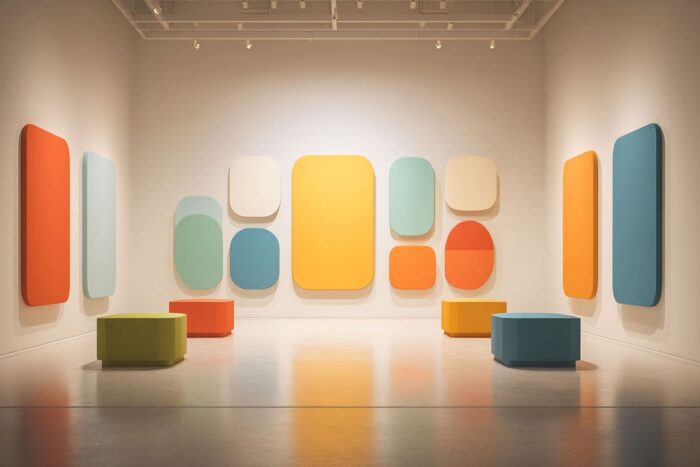Minimalism isn’t just an art style—it’s a way of seeing. By paring compositions down to their essentials, every line, shape and hue takes on outsized importance. At first glance, minimalistic art works feel tranquil; examined more closely, they reward the viewer’s curiosity, inviting personal interpretation.
“Stripping away the superfluous reveals the core emotion of a piece.”
Negative space isn’t emptiness—it’s invitation. Each unmarked area gives the eye room to breathe, and encourages us to complete the story ourselves. In a world overloaded with visual clutter, minimalism offers clarity, a chance to pause and reflect on what truly matters.
A Brief History of “Less Is More”
The seeds of minimalism were planted in the early 20th century, but it truly blossomed in the 1960s. Rebels against Abstract Expressionism’s frenetic energy, artists such as:
- Donald Judd: Built stackable metal boxes that stressed industrial precision.
- Agnes Martin: Painted delicate pencil lines on vast white canvases, exploring subtle repetition.
- Yves Klein: Embraced a single, saturated hue—International Klein Blue—to evoke boundlessness.
Their shared objective was straightforward: remove narrative distractions, let form and material speak directly to the senses. Museums began installing minimal galleries with ample walls and high ceilings, treating each work almost like a meditative pause.
The Modern Minimalist Landscape
Minimalism’s influence has seeped far beyond white-cube galleries:
- Exhibitions & Fairs
Over half of major art fairs now include dedicated “Minimalism Today” sections, featuring emerging artists who reinterpret the movement’s principles in mixed media, installation and digital formats. - Digital Minimalism
On social platforms, feeds built around strong geometric compositions—think single-object product shots or monochrome color blocks—achieve 30% higher engagement than busier, multi-subject posts. - Cross-Industry Impact
From Apple’s product design to runway collections by brands like COS and The Row, minimalism’s emphasis on clean lines and neutral palettes continues to define “modern” across disciplines.

Voices from the Field
Art Critic, Elena Ruiz
“Minimalism invites presence. You become aware of the room, the light, even the hum of the air-conditioning—it’s part of the piece.”
Sculptor, Mark Nguyen
“For me, every choice—material, scale, placement—must work doubly hard. Restraint is not absence; it’s intentionality.”
Digital Designer, Priya Patel
“When designing a UI, I borrow from minimal art: ample white space and a singular accent color guide the user’s focus.”
What’s Next for Minimalistic Art
- Interactive Environments
Installations that adapt in real time—light and shadow shifting with visitor movement, creating a living dialogue between art and viewer. - Eco-Minimalism
Artists crafting pieces from reclaimed wood or recycled metals, underscoring sustainability while maintaining reductive form. - Data-Driven Aesthetics
AI tools analyzing thousands of visual elements to generate distilled compositions—imagine a machine-curated Mondrian remix. - Sound-Space Minimalism
Exhibits pairing sparse visual objects with singular tones or ambient drones, heightening the sensory focus on form and silence.
How You Can Embrace Minimalism Today
- Curate Your Space
Remove all but one artwork or object from a wall. Let that solitary piece set the mood for the entire room. - Creative Micro-Challenge
Sketch any everyday scene—your coffee mug, a park bench, your workstation—using only three lines. Notice which details you choose and which you omit. - Photographic Exercise
Capture “negative space” photos: isolate your subject against a plain backdrop (sky, blank wall, snow) and share with #DoozleMinimal. - Start Small
Next time you write an email or social post, challenge yourself to reduce word count by 30%. See how clarity emerges when you edit ruthlessly.